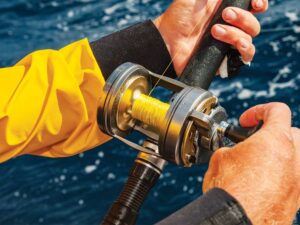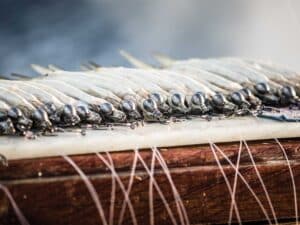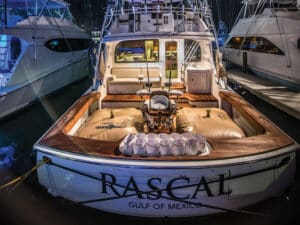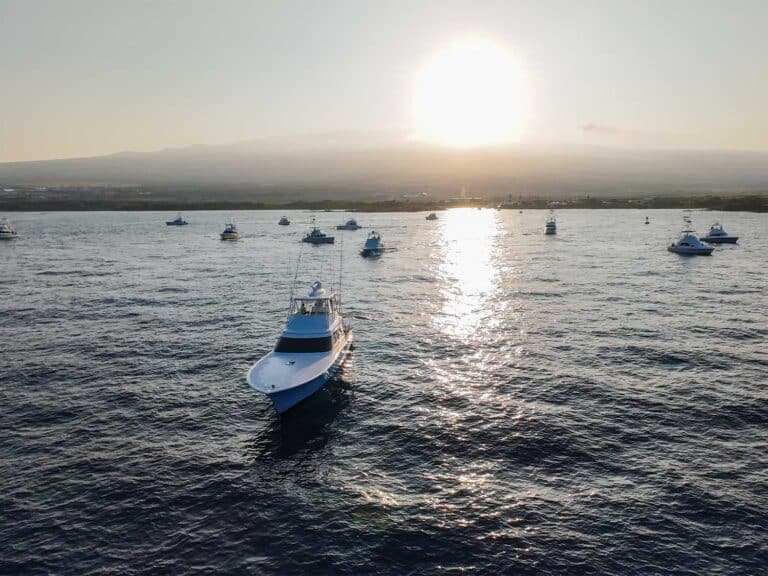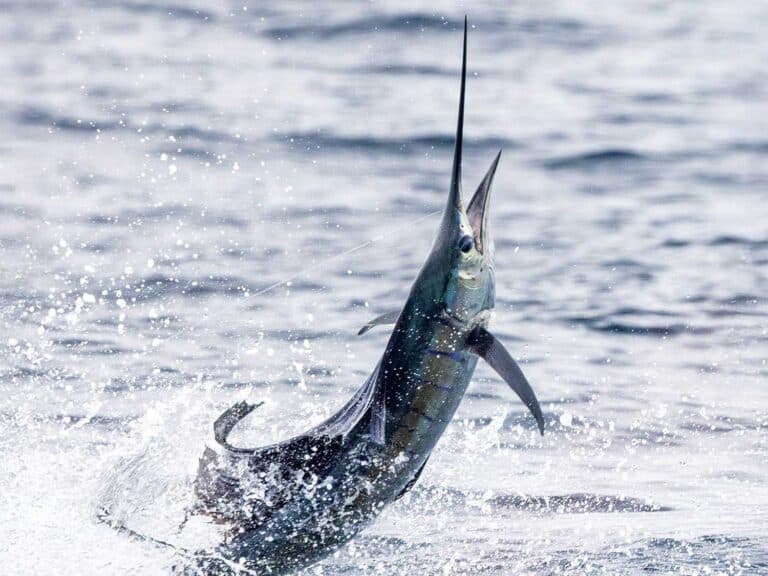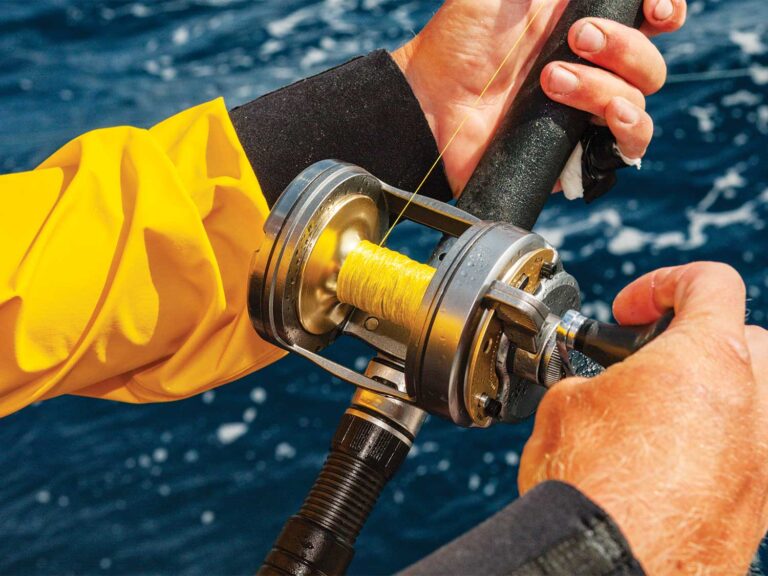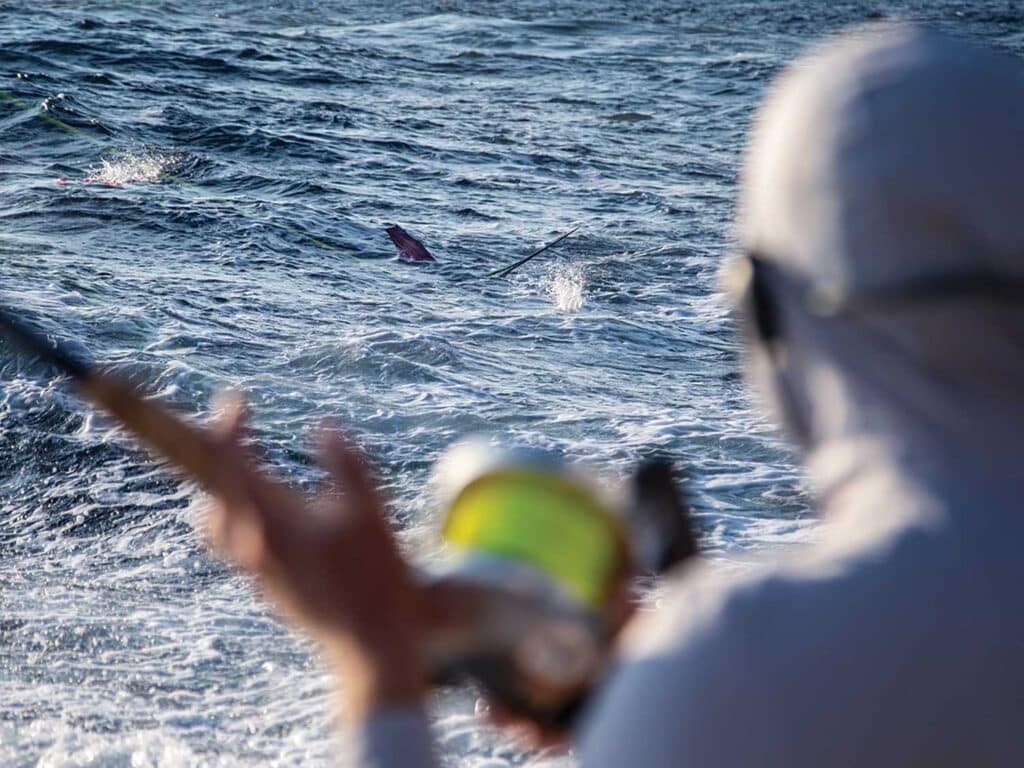
Subscribe to Marlin magazine and get a year of highly collectible, keepsake editions – plus access to the digital edition and archives. Sign up for the free Marlin email newsletter.
You sit on the mezzanine, looking into the wash behind the boat. The shadows that emerge, knifing through the water highlighted by streaks of neon, seem drawn to you. Maybe it’s the sonar; maybe it’s the 70-foot marvel you’re fishing aboard—a vessel that somehow combines all the luxury of a waterfront condo with the ability to cruise at 40-plus knots. Many things about the modern sport-fishing experience are amazing. We often take such things for granted.
It is not just the boat that raises the 27 billfish you’ll release on your trip. It likely has something to do with the 100 split-tailed mullet on the dredges, or the fresh Spanish mackerel that punctuate the flittering squid chains. For the whites and sails, you’re prepared—the dink rods are rigged, and three dozen small and medium-size ballyhoo are in the bait cooler. You’ve got the big guns too, two 50-pitch rods—one armed with a bonito, the other a 12-inch mackerel. These offerings most certainly have something to do with your success.
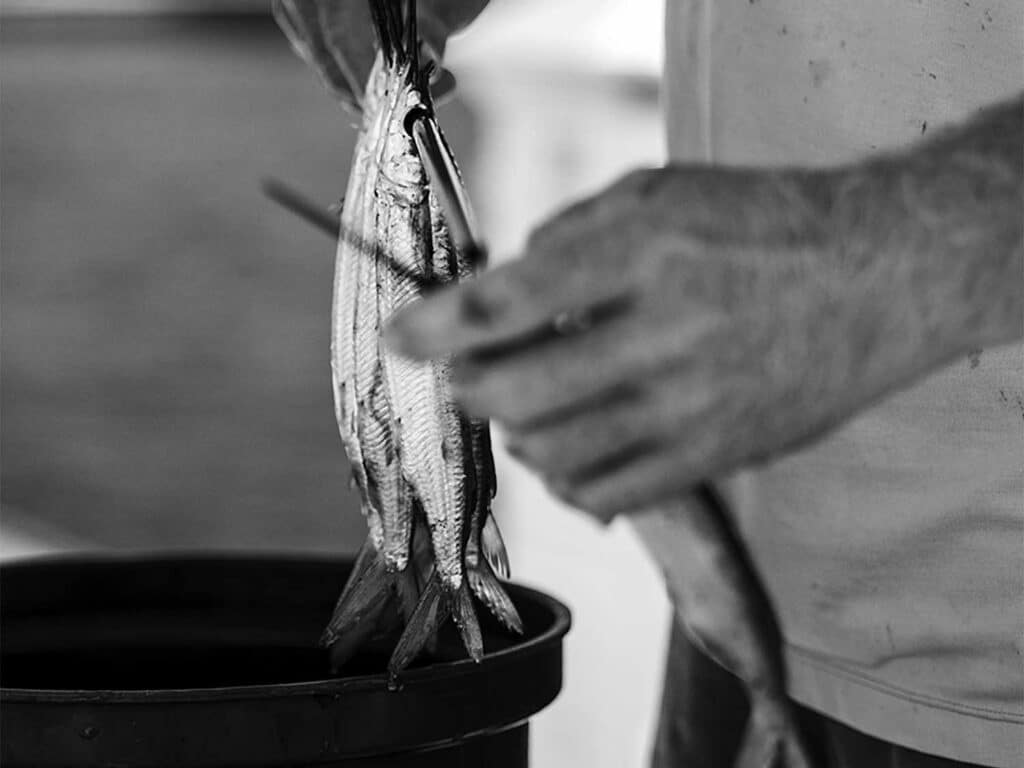
Yes, the bait situation in modern sport fishing is just as amazing as the comfort, range, technology and equipment. What follows is a behind-the-scenes glimpse at the people and the industry that allow us to bring shoals of high-quality dead baits anywhere in the world with relative ease.
RJ Boyle: Incredibly Integrated One-Stop Bait Shop
Most people know of Capt. RJ Boyle in relation to his swordfish experience or maybe his artwork. A smart, eccentric guy, Boyle has for the past 23 years run a diversified and full-service tackle shop. RJ Boyle Studios, located in Lighthouse Point, Florida, bridges both sides of the bait equation. Not only does he sell plenty of trolling and deep-dropping baits, both retailed through his shop and sold through a wholesale network that spans the country, but he and his team also process a wide range of natural baits.
“We’re a one-stop shop for all bait, not just swordfish baits. I used to work on big sport-fish boats, which gave me good perspective. We’ve got marlin baits and dredge baits,” Boyle begins. Listening to his experience relates just how diverse the bait industry really is.
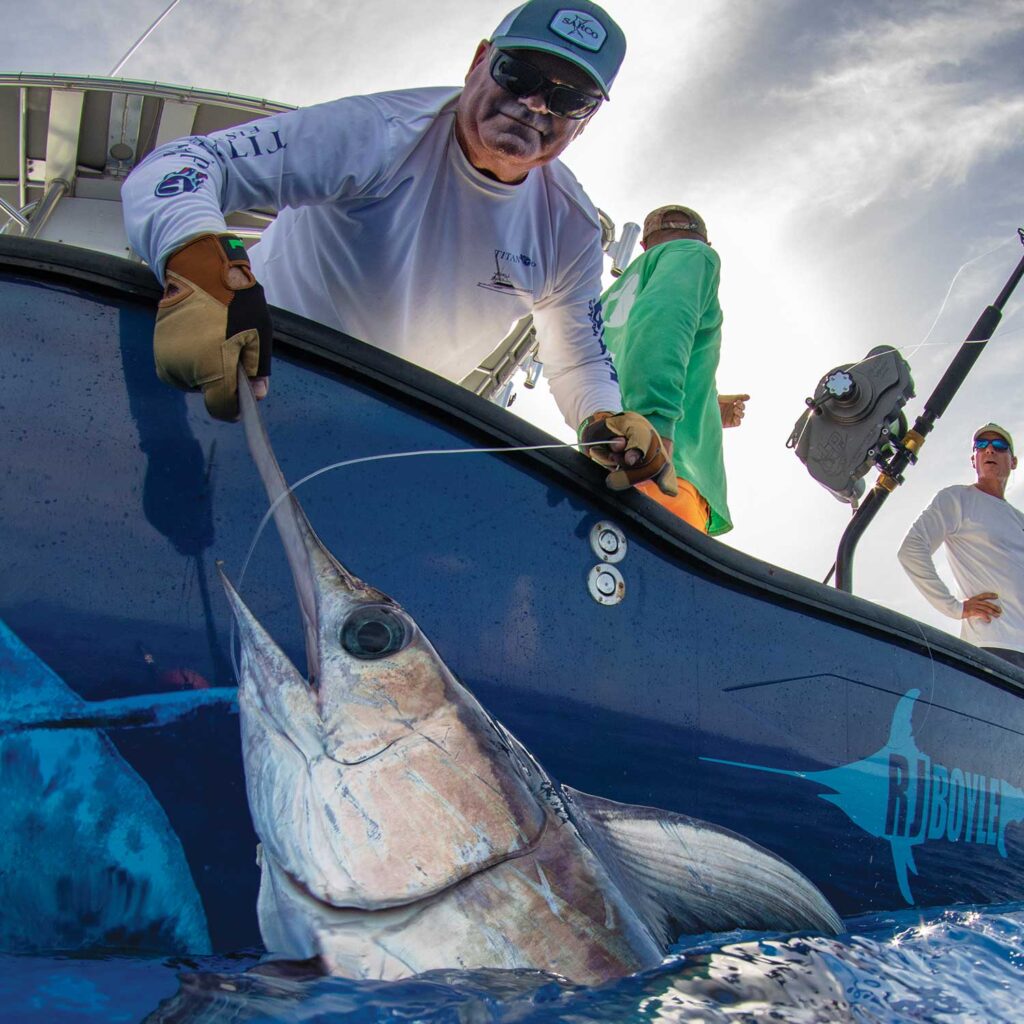
“Believe it or not, bonito strips are our No. 1 seller,” he adds. “We sell more of them than anything else. They come in standard strip (6 to 8 inches) and wahoo-size (10 to 12 inches). We process them in June, July and August. We sell 40,000 of them a year. They’re used for trolling for all pelagic species. We buy the bonito whole. It’s a three-day process to brine, cut and bag them.”
Boyle has built his name on being one of the world’s foremost innovators in targeting broadbill, so it comes as no surprise that swordfish baits make up a significant portion of his business. “In terms of volume, we sell around 30,000 swordfish baits per year, both rigged and unrigged. This is growing year over year, and we ship them all over the world. The more we market it, the more it grows,” Boyle explains. “We started a wholesale business two years ago. We took RJ Boyle baits to different stores—Bass Pro Shops and many of the best stores along the Gulf and East Coast.” Boyle goes on to explain that in recent years the Gulf Coast has been his most productive region due to the blossoming broadbill fishery and the growing popularity of deep-dropping among anglers there.
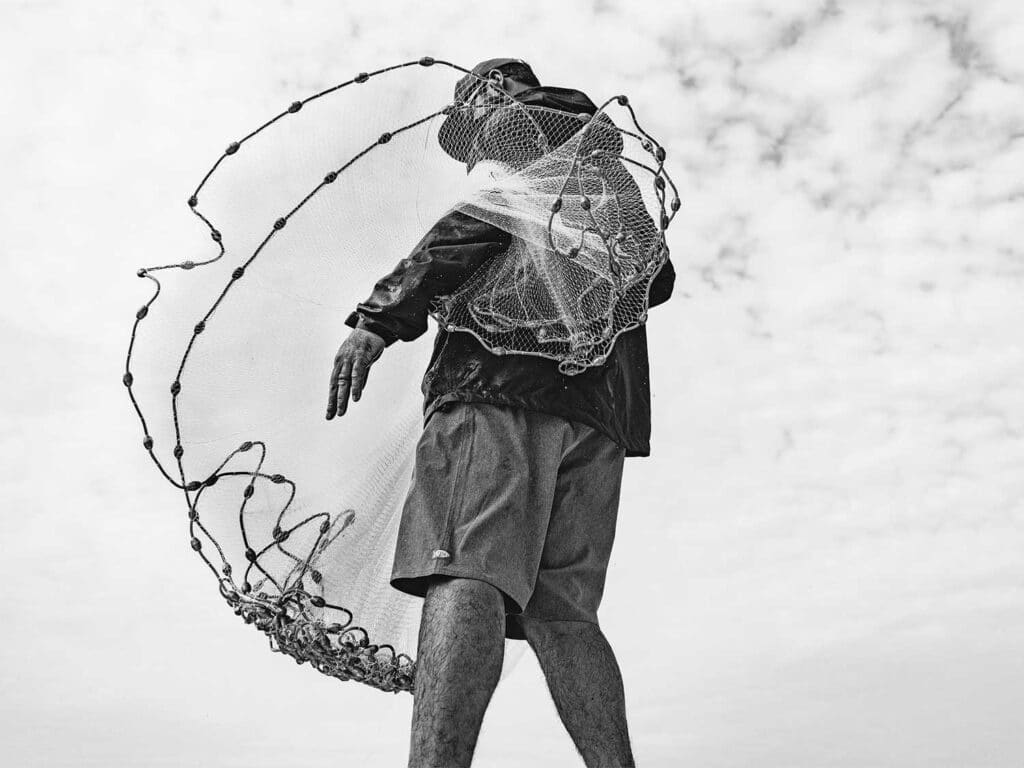
And although the rigged squid remains his most popular swordfish bait, Boyle has introduced some diversity in his bait selection to accommodate global trends and the changing demands of anglers looking for that competitive edge. “Squid has been and continues to be the gold standard in terms of what we sell the most of for swordfish baits,” Boyle says. “But as deep-dropping has become more accessible to anglers in other parts of the world, we’ve also started selling squid tentacles (one big squid tentacle), bonito ‘tacos,’ bonito bellies, ladyfish and American eels, which are trapped in pots off of Delaware and sorted by size,” Boyle adds.
Boyle also sells quite a few marlin baits. “We probably sell 6,000 to 8,000 mackerels per year. Most are for squid chains. The 12-to-13-inch variety are the desired pitch-bait size,” Boyle says. “We source them in Stuart [Florida]. It’s a seasonal fishery. We buy as many as we can and have several guys that process them. We get the mackerel from commercial guys who catch them. They are brined, heavy brined, right away in baking soda and salt. When we get them, they are leathery.
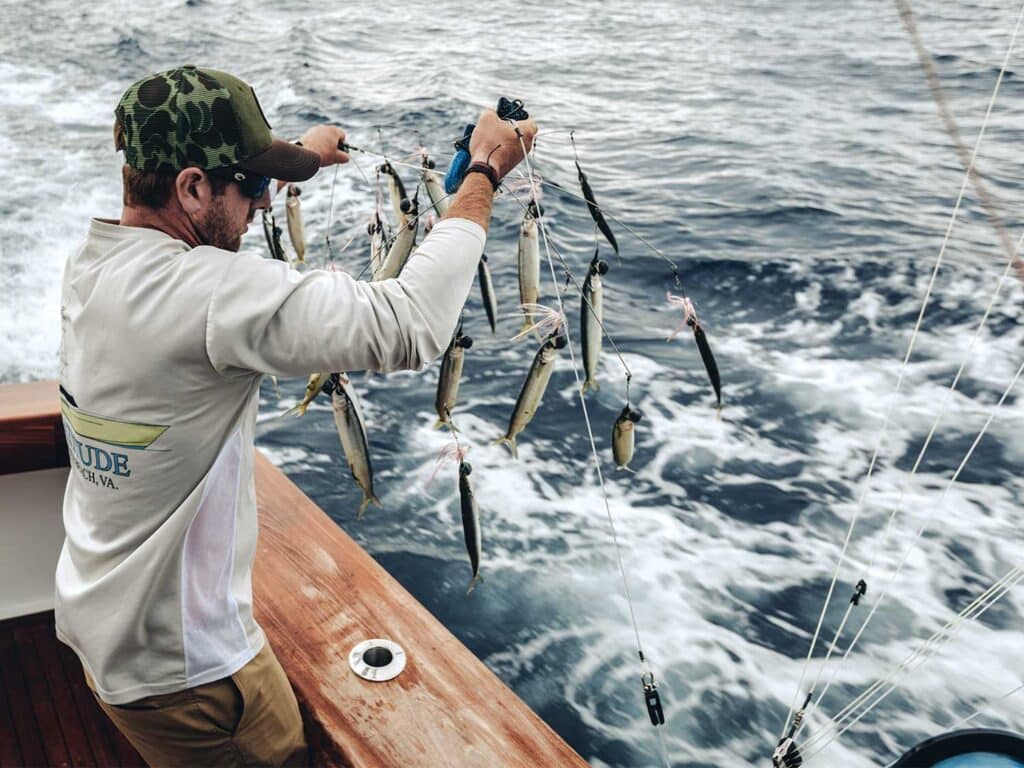
“The season is only a few weeks long. Sometimes we’ll buy 1,000 in a day,” Boyle explains. “We vacuum-seal one pack or two packs in 4-millimeter bags. Four-millimeter bags are what you want for all your baits—otherwise hooks or teeth might tear them.”
Boyle’s second-most popular marlin bait is the bullet bonito. In recent years, these baits have risen to prominence. “Bullet bonitos are small, juvenile bonito between 8 and 12 inches long. They are fantastic pitch baits. We sell between 4,000 and 5,000 of them per year, at $12 or $13 apiece. They are expensive because we troll for them,” Boyle says. “Bullet bonito are great baits. They are new in the past three or four years. They are trending upward in big blue-marlin destinations. We catch them year-round. In South Florida, there are concentrations in May, June and July. We catch them trolling a daisy chain of jigs, trolling around wrecks in 150 to 300 feet of water.”

EJW: A Venerable North Carolina Tackle Shop
Dave Willis owns EJW Outdoors in Morehead City. His great-grandfather started the business some 80 years ago. A shop of the highest order, EJW does a great big-game tackle business and carries a full assortment of apparel. EJW also sells a variety of bait.
“The bulk of our tackle business caters to traveling sport-fish guys. Our bait business is very important,” Willis says. “We sell shrimp, squid, ballyhoo of all sizes, mullets, RJ’s sword baits, Spanish mackerel, bonito strips and more. We have two specially designed walk-in coolers that are set to minus 14 degrees.”
The variety of EJW’s bait offerings reflects the diversity of fishing options available around Morehead City. This positioning provides Willis with unique insights on industry trends and developments. He shares his perspective graciously.
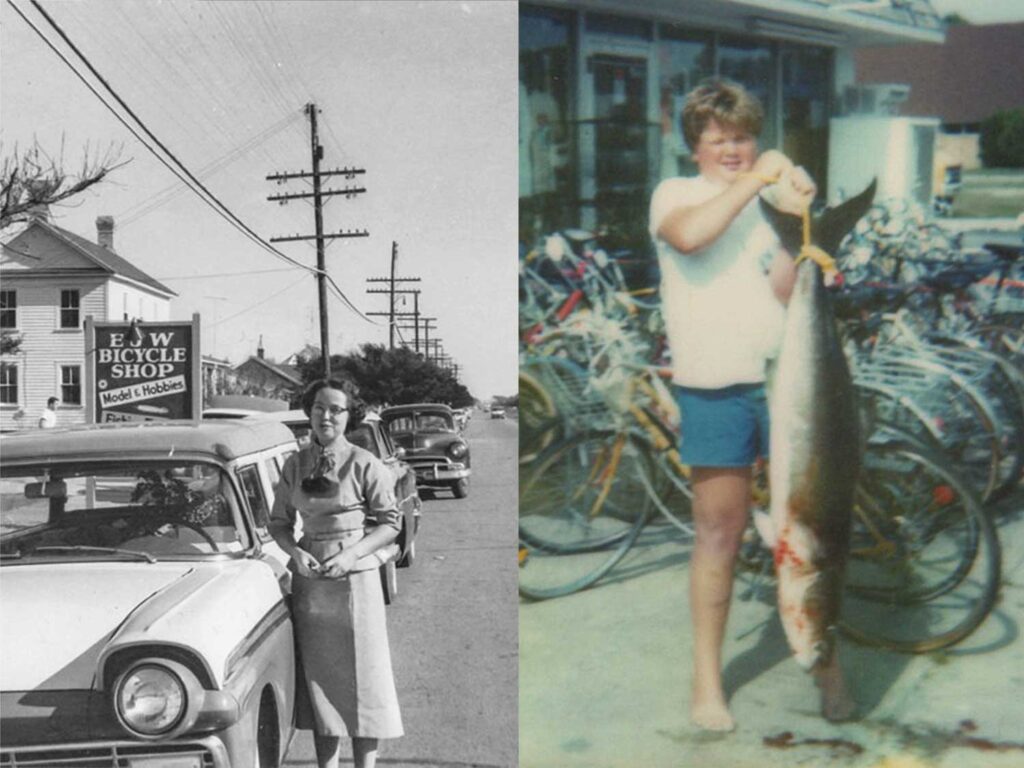
“Sizes are always changing. We sell tons of small ballyhoo for whites and sails. We sell lots of dredge mullets. In the last couple of years, we have sold lots of Spanish mackerel for pitch baits. We sell lots of medium ballyhoo for meat fish. Leading up to the Big Rock, we sell lots of select and horse ballyhoo. We also sell tons of chum and bagged shad for cobia fishing,” Willis explains.
Keeping his finger on the pulse of this sport-fishing hotspot—Morehead City is home to the Big Rock Blue Marlin Tournament and in the neighborhood of the mecca of custom-boat building—provides Willis with unique insights. “The demand evolves yearly. Preseason we’ll buy pallets of bait. Traveling boats will buy cases and cases, as many ballyhoo as their freezers will hold.”
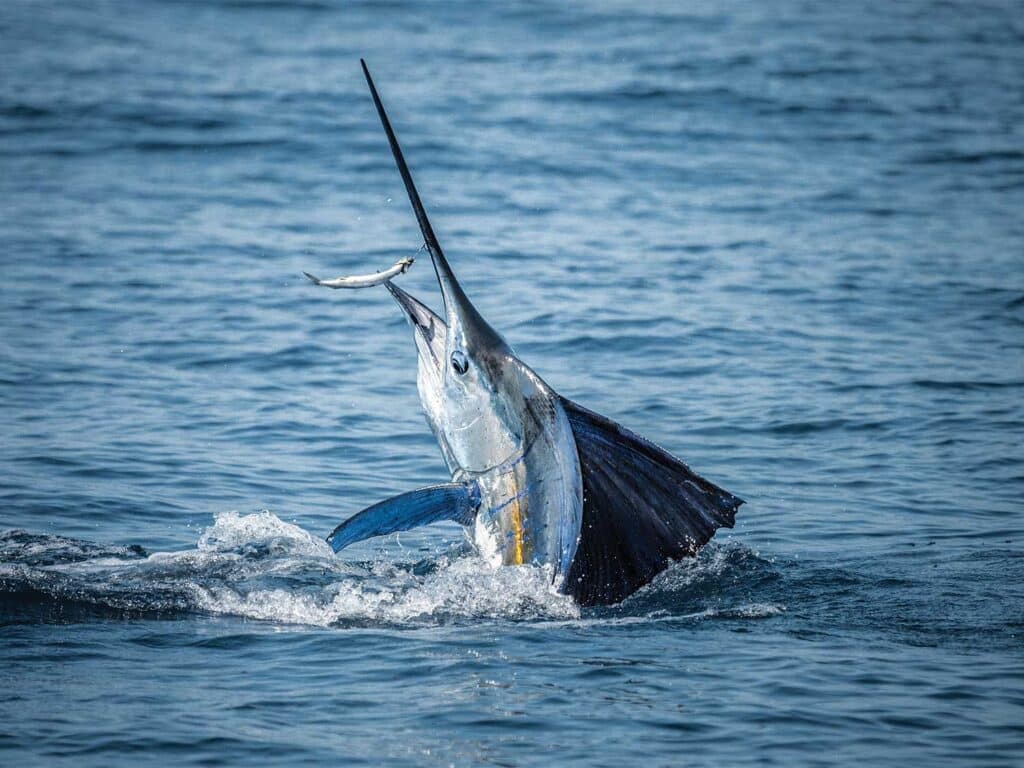
Baitmasters and the Industrial Bait Complex
Ballyhoo are perhaps the most universal bait in the offshore-fishing landscape, and no name is more synonymous with ballyhoo than Baitmasters of South Florida. Mark Pumo owns the company and provides perspective on its operation and global influence. As he says, “We’re probably the biggest, or one of the biggest, ballyhoo processors out there.
“We ship baits everywhere and anywhere in the world. We’ve sent baits to the Canary Islands. I got a call from my friend who was fishing in Dubai. He popped open a cooler at the marina and saw our baits. He took a picture and told me, ‘Wow, you guys are everywhere!’”
And it’s not just their geographic reach that’s impressive. “We do everything. We cut mullet—cut and wedge or cut and split tail. We provide a lot of mullet for dredges. We do a lot of mackerel—up to 18,000 or 19,000 mackerel per year. They’re all hook-and-line caught. We ship them to tournament guys, rigged and unrigged,” Pumo says. “We sell pallets and pallets of rigged and unrigged squid. That’s an Argentinian bait, the Argentinian illex squid. We can’t get them here.”
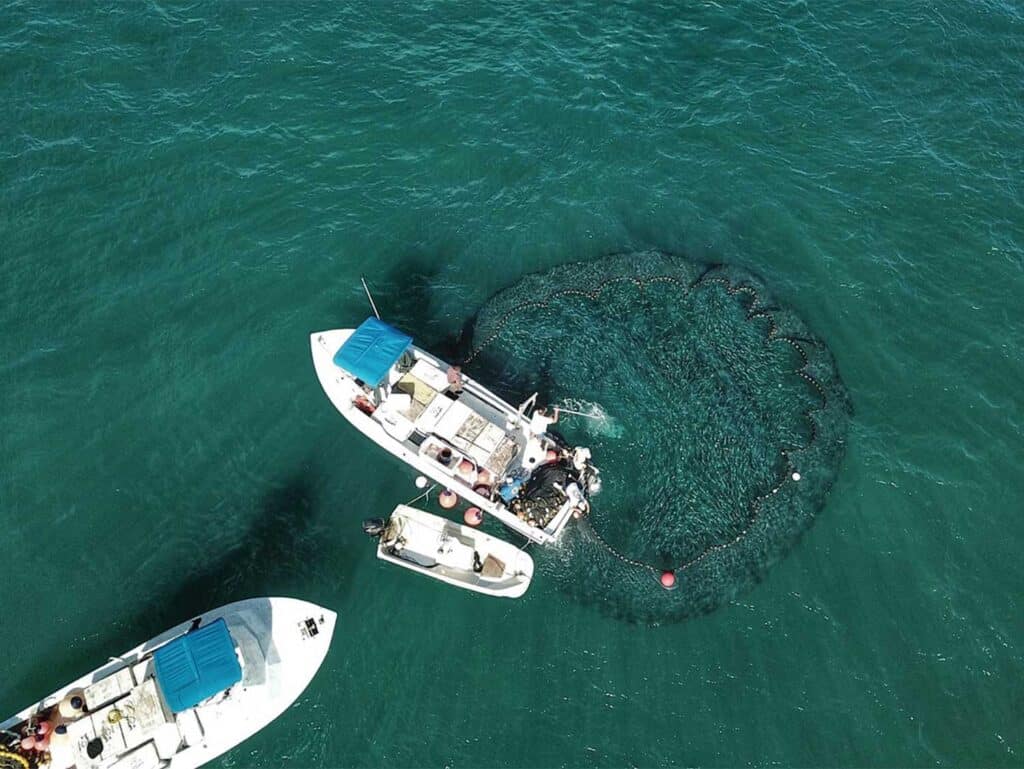
While Baitmasters sells various baits, it is the ballyhoo that is the company’s most popular option. “All of our fish [ballyhoo] are caught in the Keys. Our boats are in Key Largo, and we mainly fish in the upper Keys. Our fisherman is like the Michael Jordan of ballyhoo fishing. He is very good at knowing where the fish are and how to catch them. It’s a very hard fishery—not everyone can do it,” Pumo says.
“Each boat has a crew of five guys. It gets very involved. The fishing is in very shallow water with coral heads and patch reefs. We’re fishing with a rope and a net that can stretch for a quarter mile. If the wind or current change and you don’t know what you’re doing, you can lose a lot of gear.”
All of Baitmasters’ ballyhoo are net caught using lampara nets. These specialized pieces of gear require a permit. They are shaped like large dustpans and dragged behind the boat, seining the surface of the water.
“Ballyhoo is a seasonal fishery. August is closed. There is a moratorium. We start fishing September 1. That’s the beginning of the season. The majority of the fish are caught through March,” Pumo mentions. “Then the abundance declines, and we fish less frequently—three times per week instead of five. The catch rates decrease between 60 and 70 percent.
“Ballyhoo fishing is very expensive. There are labor costs, fuel costs and wear on the boat,” he explains. It can also be very good. “We have a catch limit of 10 boxes daily—the insulated commercial fish boxes. Each box holds 1,600 to 2,800 ballyhoo, depending on size.”
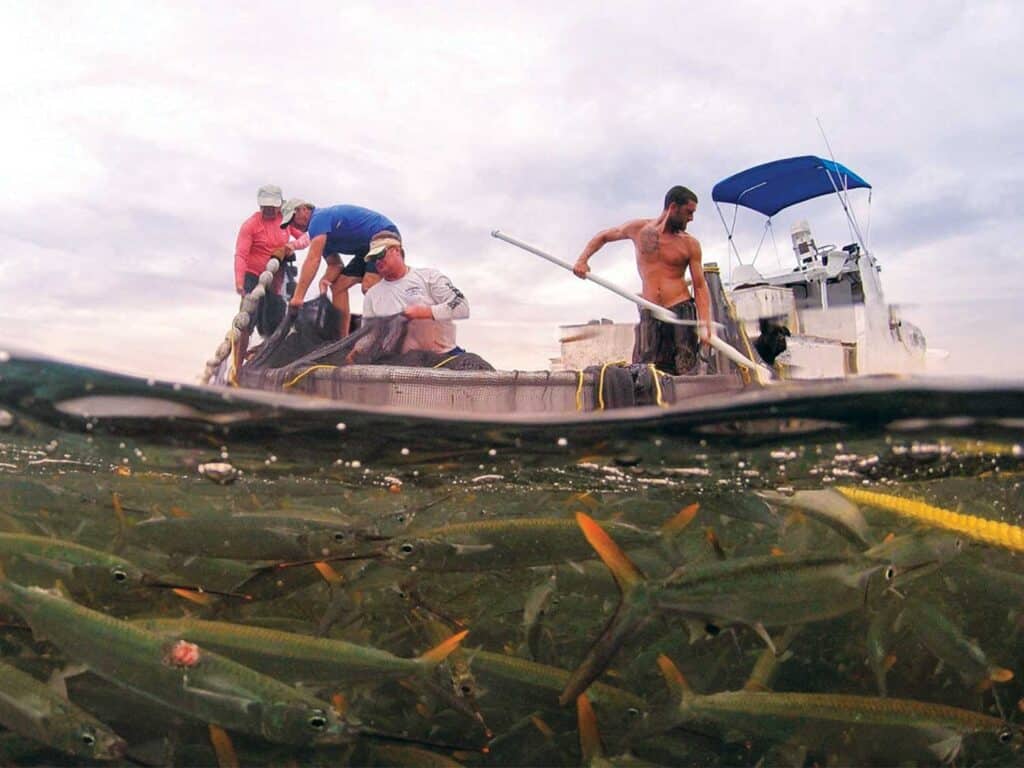
But catching them is only half the battle. What happens after the ballyhoo hit the deck is what really determines the quality of the final product. “We catch them and get the fish out of the water as quickly as possible and into an ice-saltwater brine. Once the box is full, we top it off with ice and put on the lid, and then we move to the next box,” Pumo explains. “The boxes are picked up by truck. We drive them to Miami. They are brined overnight and packaged in the morning.
“They are categorized by size, vacuum-packed and put into a blast freezer at minus 25 degrees. The fish are frozen overnight. We box everything in case boxes by size. They go onto pallets and into storage until shipping,” Pumo says. “We ship by the pallet or in insulated [plastic-foam] coolers.”
The volume of ballyhoo that Baitmasters harvests and sells varies a bit by the year. “The quantity goes by season. It depends on abundance and the number of boats fishing. It also depends on the size of the fish we catch. We average 2,300 ballyhoo per box. We’ve done almost 40,000 fish in a day,” Pumo says.
“Ballyhoo fishing is cyclical. This year has been better than average, but lots of the fish are on the smaller side—mediums and smalls. Not a lot of selects or horses,” Pumo explains. “The fishery is sustainable. Scientists ride along every year.”
More Than Just Bait
The next time you sit on the mezzanine and ponder your place in the world and the wonder of the modern sport-fishing experience, don’t forget to give a bit of thought to the bait that makes it all possible. After all, there’s an awful lot that goes into making that dream spread become a reality.
